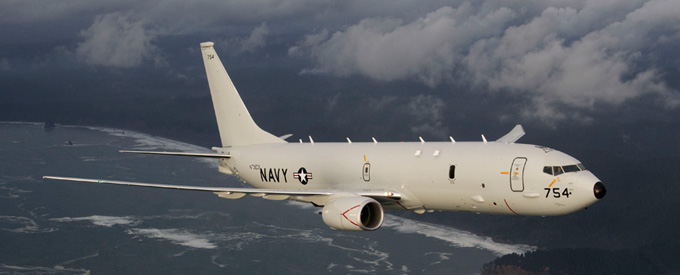2020-05-03
USN Awards Boeing US$1.5B Contract
The U.S. Navy(USN) awarded Boeing a US$1.5 billion production contract for the next 18 P-8A Poseidon aircraft. The contract includes eight aircraft for the U.S. Navy, six aircraft for the Republic of Korea Navy and four aircraft for the Royal New Zealand Air Force.
The Republic of Korea Navy and Royal New Zealand Air Force acquired the aircraft through the Foreign Military Sales process and will receive the same P-8A Poseidon variant designed and produced for the U.S. Navy. The Royal New Zealand Air Force is expected to begin receiving aircraft in 2022 and the Republic of Korea Navy will begin receiving aircraft in 2023.
The P-8 is a proven long-range multi-mission maritime patrol aircraft capable of broad-area, maritime and littoral operations. A military derivative of the Boeing 737 Next-Generation airplane, the P-8 combines superior performance and reliability with an advanced mission system that ensures maximum interoperability in the battle space.
The P-8 is militarised with maritime weapons, a modern open mission system architecture and commercial-like support for affordability. The aircraft is modified to include a bomb bay and pylons for weapons. It has two weapons stations on each wing and can carry 129 sonobuoys. The aircraft is also fitted with an in-flight refuelling system.
The P-8A Poseidon has advanced sensors and mission systems, including a state-of-the-art multi-role radar, high definition cameras, and an acoustic system with four times the processing capacity of the AP-3C Orions.
Multi-mission Maritime Patrol Aircraft
The P-8A is built specifically as a military aircraft and includes a weapons bay, under wing and under fuselage hard points for weapons, and increased strengthening for low level (down to 200ft) operations and high angle turns.
Moreover, it has an extensive communications system including radios and data links across VHF, UHF, HF and SATCOM.
An internal fuel capacity of almost 34 tonnes allows the P-8A to conduct low level anti-submarine warfare missions at a distance of greater than 2,000 kilometres from base. The P-8A will be compatible for air-to-air refuelling with the KC-30A MRTT.
The P-8A’s comprehensive mission system features an APY-10 radar with modes for high-resolution mapping, an acoustic sensor system, including passive and multi-static sonobuoys, electro-optical/IR turret and electronic support measures (ESM). It can deliver comprehensive search and tracking capability, while the aircraft weapons system includes torpedoes for engaging sub-surface targets.
The Boeing P-8 excels at anti-submarine warfare; anti-surface warfare; intelligence, surveillance and reconnaissance and search and rescue. It can fly higher (up to 41,000 ft) and get to the fight faster (490 knots). Shorter transit times reduce the size of the Area of Probability when searching for submarines, surface vessels or search and rescue survivors. P-8 is also designed for low altitude missions and has already proven its abilities supporting humanitarian and search and rescue missions.
Globally proven, the P-8 has two variants: The P-8I, flown by the Indian Navy, and the P-8A Poseidon, flown by the U.S. Navy and the Royal Australian Air Force. The United Kingdom and Norway have also selected the P-8A as their future maritime patrol aircraft. UK expects full operating capability by 2024. The aircraft are known as Poseidon MRA Mk1 in the UK’s Royal Air Force (RAF) service.
Operational Readiness
Furthermore, the P-8 ensures maximum interoperability in the future battle space and has been engineered for 25 years/25,000 hours in the harshest maritime flight regimes, including extended operations in icing environments.
Leveraging worldwide logistics, maintenance and training support systems, Boeing provides sustainment solutions to support the capabilities of the P-8.
Designed to provide high levels of fleet availability while reducing life-cycle cost, Boeing’s P-8 support capabilities leverage commercial programme solutions – including supply chain, global support, field service, data/tech publications, spares and repairs, modifications and retrofits – to offer tailored solutions.
By utilising Boeing’s existing commercial supply chain infrastructure and maintenance, repair and overhaul service relationships, P-8 sustainment solutions offer reduced programme costs and availability risks to enable fleet operational readiness. Joint support teams result in improved readiness through rapid issues resolution and reliability improvement.
Boeing’s expertise in derivative aircraft sustainment and commercial fleet management provides customers with greater availability at lower operating costs, and the availability to leverage the integration of Boeing’s commercial and defence aerospace capabilities.
Reference Text/Photo:


No Comments